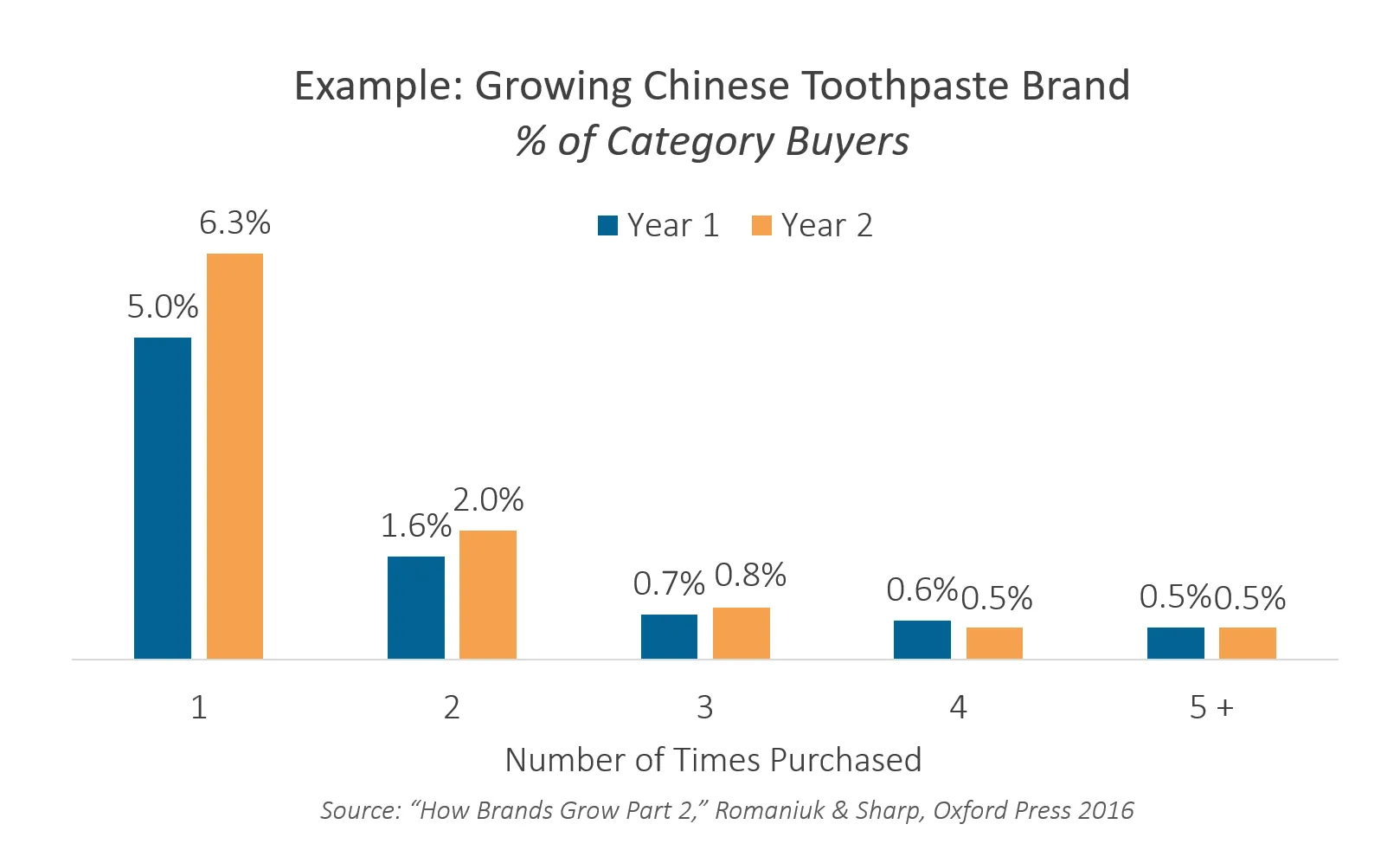Brand growth comes from light buyers
Intuitively, it seems like the 80/20 rule would hold true for a brand’s revenue distribution, where the top 20% of your customers account for 80% of your revenue.
Instead, extensive empirical research done by Byron Sharp and presented in How Brands Grow shows that your top 20% of buyers usually account for roughly 50% of revenue. This is known as the “Pareto law” in How Brands Grow.
Furthermore, there’s little room to get heavy buyers to buy more, because:
- They are already spending a lot in your category, which means they probably can’t spend more in your category than they already ae.
- They are already spending a lot with your brand, which means they probably can’t spend more with you than they already are.
- Because they’re heavy category buyers, they are loyal to the other brands in your category they buy from and are
- unlikely to spend more with you.
On the other hand, light buyers are more numerous and have room to grow their spending, both in your category and with your brand specifically.
In fact, Sharp’s research also shows that whenever a brand grows significantly, most of that growth comes from light buyers. In the chart below, for example, we see that a Chinese toothpaste brand that grew 1.5% over one year saw 65% of the growth coming from one-time buyers:

This means that if you want to grow your brand significantly, you need to focus on light buyers and non-brand buyers rather than doubling down on your heavy buyers. This is the reason why Loyalty programs don’t drive direct growth.
The other side of this is that Light buyers favor large brands.